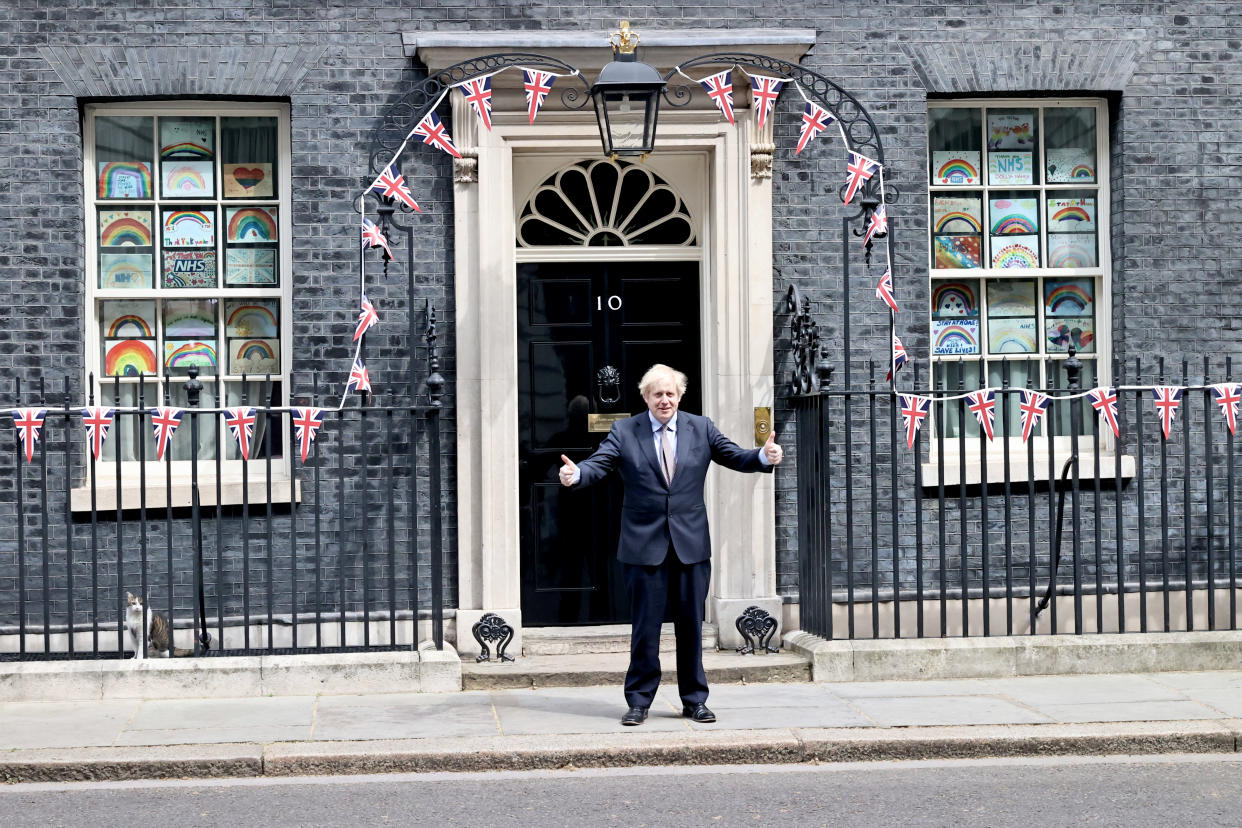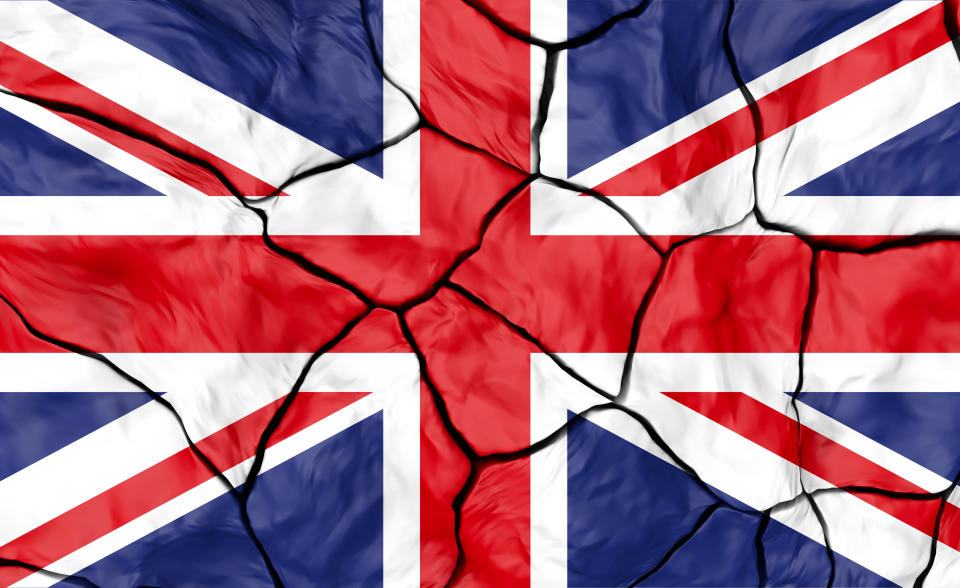Coronavirus: Boris Johnson starts to reopen UK economy by easing lockdown despite death toll rise

Prime minister Boris Johnson has taken the first step in reopening the UK economy by easing strict lockdown measures that have been in place for nearly two months.
In a pre-recorded message, broadcasted Sunday evening, Johnson confirmed that the government is starting to take key steps in lifting strict measures.
He said the country has “put up with restrictions to freedom and you’ve put up with hardships of social distancing and, as things stand, it’s the only way to defeat the coronavirus.”
He said that although “the death toll has been tragic,” adopting those lockdown measures has allowed to prevent a half a million deaths, in a worst case scenario.
READ MORE: Boris Johnson speech: Five ways UK coronavirus lockdown will change this week
Johnson emphasised that easing of lockdown measures are “conditional” and the government will be vigilant on making sure the transmission rate R0 doesn’t rise to over 1.0 again.
Those who can’t work from home, should go to work: The first step is a “change of emphasis” — this means those who can’t work from home, such as those in manufacturing or construction, should go back to work and avoid public transport where they can.
Unlimited exercise but social distancing still applies: He said he wants people to take unlimited exercise but people will still have to adhere to social distancing measures — the UK government will also increase fines for those who breach social distancing measures.
Shops and schools: From 1 June — Johnson said the government is hoping that shops will start to reopen and children will start going back to school.
Hospitality sector: He said he also hopes parts of the hospitality sector will reopen, “at the earliest by July.”
READ MORE: UK's official coronavirus death toll rises by 269 to nearly 32,000
The UK has still failed to hit its target of testing 100,000 a day. There are currently around 220,000 confirmed cases on coronavirus in the UK. Data on Sunday said there are now nearly 32,000 deaths related to COVID-19 in Britain — the second worst death rate, behind the US.
On Monday, a more detailed plan will be unveiled by the UK government on how lockdown measures will be eased.
“Throughout this period of the next two months we will be driven not by mere hope or economic necessity. We are going to be driven by the science, the data and public health,” said Johnson.
“And I must stress again that all of this is conditional, it all depends on a series of big ifs. It depends on all of us – the entire country – to follow the advice, to observe social distancing, and to keep that R down.”
Confusion over ‘stay alert’ versus ‘stay home’
Earlier on Sunday, Johnson posted the new Whitehall slogan of “stay alert” instead of “stay home.”
Everyone has a role to play in helping to control the virus by staying alert and following the rules.
This is how we can continue to save lives as we start to recover from coronavirus.#StayAlert pic.twitter.com/2z9yl1Fxs4— Boris Johnson (@BorisJohnson) May 10, 2020
However, it has caused confusion among experts and other leaders.
Scotland’s first minister Nicola Sturgeon criticised Johnson’s decision to ditch “stay at home” for stay alert and emphasised how she will still tell Scots to “stay home.”
“For Scotland right now, given the fragility of the progress we have made, given the critical point we are at, it would be catastrophic for me to drop the stay at home message, which is why I am not prepared to do it … particularly in favour of a message that is vague and imprecise,” she said.
“From tomorrow, that once a day limit will be removed. If you want to go for a walk more often, or to go for a run and also a walk later on in the day then you can now do so,” she said, adding that the relaxation would not apply to ‘sunbathing, picnics or barbecues.’
“The fact that you’re allowed to exercise more than once is definitely not a licence to start meeting up in groups at the park or at the beach,” she said. “Doing that really does risk spreading this virus.”
Northern Ireland’s first minister Arlene Foster also said she’s staying with the “stay home” message: “On the whole, the message is to stay at home. We will say we are not deviating from the message at this time.”
Meanwhile, senior doctors warn that growing non-compliance with the lockdown risks triggering a second wave of COVID-19 infections. They added that Johnson’s “stay alert” rather than “stay home” will confuse the public and risk the health of everyone. This includes Dr David Hepburn, an intensive consultant in Wales, who said on Twitter: “Just watched the conga lines/street parties on the news. The nation has lost its f****** mind. We’re strapping in for the second wave.
Just watched the conga lines/street parties on the news. The nation has lost its fucking mind. We’re strapping in for the second wave. I’m so, so tired, and so pissed off. We’ve had a few days of respite and I was starting to feel hopeful. Can’t believe I was so naive
— david hepburn (@apnoeaboy) May 9, 2020
The state of the UK economy

The Bank of England (BOE) recently said that the country’s gross domestic product (GDP) could shrink by 14% in 2020. In addition, former rate setter for BOE, Danny Blanchflower, said in an interview on Sunday that the UK could see inflation rise, as the central bank continues to print money in order to survive the coronavirus crisis.
Blanchflower, who sat on the Bank of England's monetary policy committee from 2006 to 2009 said “the BOE will keep buying gilts until the market calls its bluff, but we are nowhere near that stage. That might happen if there is inflation, but at the moment there is no prospect of that. So it's all hands to the pump.”
READ MORE: Confidence in business leaders to navigate crisis hits low
Last month, the Treasury issued £45bn ($55.8bn) of government bonds – or gilts – to raise money to get Britain through the crisis.
The UK’s independent budget watchdog, the Office for Budget Responsibility (OBR), also said that the UK economy could contract by as much as 35% in the second quarter of 2020 if the current lockdown persists for three months.
Meanwhile, chancellor Rishi Sunak will set out next week how he intends to unwind the job retention – or furlough – scheme, which is scheduled to end on 30 June. Early on, the UK government unleashed a set of unprecedented financial measures worth 15% of GDP to help businesses and the economy combat the impact from the spread of COVID-19.
Sunak has promised there will be no “cliff edge” and his officials are working on a plan to phase out the scheme, including possibly making provision for furloughed staff to return to work part-time.
A new survey has shown that half of UK employees are ready to return to work if COVID-19 safety measures are in place, with younger workers being the most eager.
READ MORE: Coronavirus: Half of UK employees ready to return to work
People working in consumer goods are the most happy to go back to work after lockdown, some 72%, while those working in hospitality and the public sector are least confident, at just 40% and 41% respectively.
If some staff are allowed to return to work, more than two-thirds would be happy to wear personal protective equipment (PPE) on public transport and in the workplace, say the survey results.


